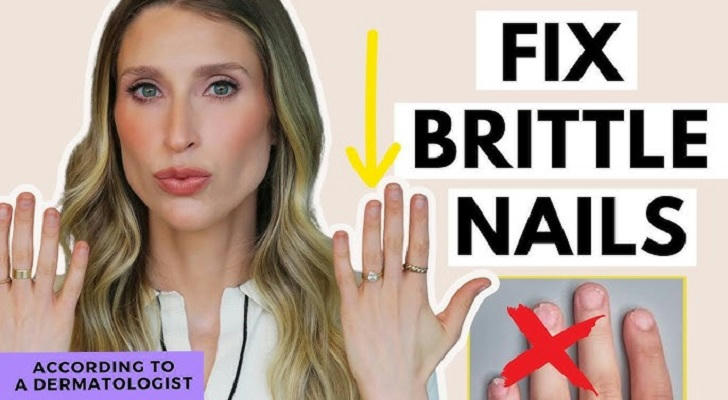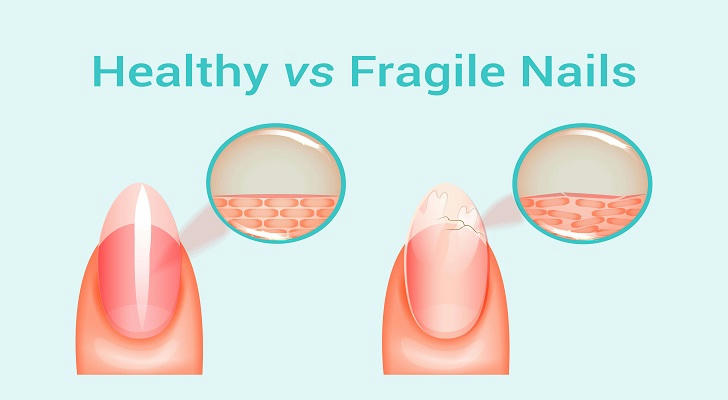How to Strengthen Weak or Brittle Nails
Weak or brittle nails are a common concern, especially among individuals who frequently use nail polish, expose their hands to water or chemicals, or experience nutrient deficiencies. Fragile nails can chip, split, or peel easily, which not only affects appearance but can also signal underlying health or lifestyle issues. Fortunately, several evidence-based and practical steps can help strengthen nails and reduce breakage without requiring expensive treatments or complex routines.

What Causes Weak or Brittle Nails?
Brittle nails can be either dry and crumbly or soft and bendable. Each type may stem from different causes:
- Dry, cracking nails often result from external factors like frequent handwashing, low humidity, or exposure to cleaning agents.
- Soft, peeling nails might be linked to excessive moisture, overuse of nail products, or deficiencies in certain nutrients.
Some common causes include:
- Environmental exposure (water, detergents, cold weather)
- Frequent manicures or use of acetone-based nail polish removers
- Aging, which naturally reduces moisture in nails
- Vitamin or mineral deficiencies, particularly in biotin, iron, and zinc
- Medical conditions such as hypothyroidism, anemia, or psoriasis
1. Moisturize Nails and Cuticles Daily
Dryness is one of the leading contributors to brittle nails. Just like skin, nails require hydration to maintain flexibility and prevent breakage.
What to do:
- Use a nourishing hand cream or cuticle oil containing ingredients like jojoba oil, vitamin E, or shea butter.
- Apply after handwashing and before bed to lock in moisture.
- Consider wearing cotton gloves at night after moisturizing for deep hydration.
Why it works:
Moisturizers help prevent the nail plate from drying out and separating into layers, a common issue known as onychoschizia.
2. Limit Water and Chemical Exposure
Prolonged exposure to water or harsh cleaning products can strip the nail’s natural oils, weakening the nail structure over time.
Tips to reduce damage:
- Wear rubber gloves when cleaning, washing dishes, or gardening.
- Avoid soaking hands in water for extended periods.
- Use gentle, fragrance-free soaps to minimize irritation.
Research published in Clinical Dermatology (2010) confirms that frequent wetting and drying cycles cause nail brittleness by disrupting keratin bonds.
3. Strengthen from Within with Proper Nutrition
Nails are composed primarily of keratin, a protein that also builds hair and skin. Nutrient deficiencies can weaken this structure, making nails more prone to damage.
Key nutrients for healthy nails:
- Biotin (Vitamin B7): A study in the Journal of the American Academy of Dermatology showed that 2.5 mg/day of biotin over several months improved nail strength in 91% of participants.
- Iron: Low levels may cause nails to become thin or spoon-shaped.
- Zinc: Essential for cell growth and repair.
- Omega-3 fatty acids: Help moisturize the nail bed and reduce inflammation.
Dietary sources to include:
Eggs, nuts, leafy greens, salmon, sweet potatoes, and whole grains.
4. Avoid Harsh Nail Products and Practices
Nail hardeners, acetone-based polish removers, and gel or acrylic nails can contribute to nail fragility over time.
Healthier practices include:
- Use non-acetone polish removers.
- Give nails regular breaks from polish.
- File gently in one direction with a fine-grit file instead of sawing back and forth.
5. Keep Nails Short and Well-Shaped
Long nails are more likely to snag or split. Maintaining a shorter length can reduce breakage and improve nail strength.
Maintenance tips:
- Trim nails regularly, rounding the edges slightly to prevent snagging.
- Use a soft nail file to smooth rough edges.
- Avoid biting nails or using them as tools.

6. Hydrate From the Inside Out
Dehydration affects nail health just as it impacts skin. Drinking enough water supports nail flexibility and growth.
General guidance:
- Aim for around 8 cups (64 ounces) of fluids per day.
- Include hydrating foods like cucumbers, oranges, and strawberries.
7. Consider Gentle Nail Treatments
Some treatments are designed to support nail health without harmful chemicals.
Look for treatments labeled:
- Formaldehyde-free
- Toluene-free
- Containing plant-based keratin, calcium, or ceramides
Check the ingredient list and opt for products with clear, transparent labeling.
8. Monitor for Medical Conditions
Persistent nail weakness may be a symptom of an underlying issue. When nails do not improve despite consistent care, it may help to consult a healthcare professional.
Possible conditions include:
- Anemia (iron deficiency)
- Hypothyroidism
- Raynaud’s syndrome
- Psoriasis or eczema affecting nail beds
9. Be Consistent and Patient
Nail strengthening takes time. Nails grow about 3 millimeters per month, so visible changes can take several weeks.
By maintaining healthy nail habits consistently, improvements will gradually become more noticeable.
Conclusion
Strengthening brittle nails involves practical steps that promote long-term health and durability. With daily care, proper nutrition, and a gentle routine, nails can regain their strength and resilience naturally. Recognizing the causes of nail fragility and choosing smart, consistent practices can lead to healthier nails—no fads or extreme products required.

References:
- Journal of the American Academy of Dermatology, 1993; 29(5 Pt 1):843-6.
- Clinical Dermatology, 2010; 28(2):180–187.
- NIH Office of Dietary Supplements, Biotin Fact Sheet: https://ods.od.nih.gov/factsheets/Biotin-Consumer/
